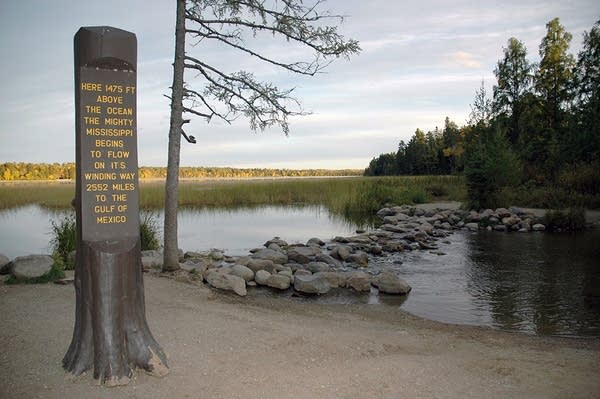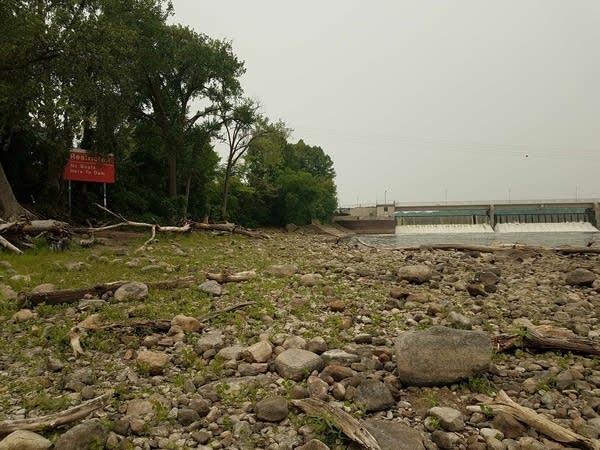Report lists Mississippi as one of ‘most endangered’ U.S. rivers

Go Deeper.
Create an account or log in to save stories.
Like this?
Thanks for liking this story! We have added it to a list of your favorite stories.
Citing threats from pollution and climate change, a new report lists the Mississippi River — from its headwaters in northern Minnesota down to the Gulf of Mexico — as one of the most endangered rivers in the United States.
Every year, the environmental advocacy group American Rivers publishes a list of the 10 U.S. rivers it considers most at risk. The group considers a waterway's significance, as well as the magnitude of threat it faces.

The group’s 2020 report included a portion of the upper Mississippi from Minnesota to Missouri. This year, American Rivers has listed the river’s entire length.
“The Mississippi River is America’s most famous and culturally significant river, and it is degrading due to climate change, habitat loss, invasive species and water pollution,” Olivia Dorothy, American Rivers restoration director based in Illinois, stated in a news release. “This has real impacts on local economies, public safety and quality of life.”
Turn Up Your Support
MPR News helps you turn down the noise and build shared understanding. Turn up your support for this public resource and keep trusted journalism accessible to all.
The Mississippi is the source of drinking water for 20 million Americans in 50 U.S. cities, and generates an estimated $400 billion a year in economic activity. It’s also home to more than 800 species of fish and wildlife, and is a major flyway for waterfowl and migratory birds.
It also has major historical and cultural significance, provides a transportation route for barge traffic and recreational opportunities for tourists, boaters and anglers.
“It’s a river that’s troubled, but really important,” said Trevor Russell, water program director for the nonprofit Friends of the Mississippi River.
Despite that importance, the Mississippi is considered impaired for failing to meet water quality standards for a variety of pollutants, Russell said, including nutrients such as phosphorus and nitrogen, sediment, mercury and bacteria such as fecal coliform.
And there are the impacts of climate change, which are causing more frequent and severe flooding that washes sediment and pollution off the land and into the river, Russell said.

“As more extreme weather events emerge in our future, the river is having a harder time managing the flow,” he said. “And so we're seeing extreme flooding events that can be devastating to communities.”

In the past half century since the passage of the Clean Water Act, there has been significant efforts to address “point” sources of pollution — industrial or sewage treatment plants that were discharging pollutants straight into the Mississippi.
But not as much progress has been made on reducing nonpoint source pollution, Russell said, such as stormwater runoff from cities, or agricultural fertilizers running off farm fields.
“Those issues have not improved at the same rate, and in some cases are actually getting worse, meaning that water quality isn't improving in the river,” he said.
Nutrients flowing downstream have created a dead zone in the Gulf of Mexico where it feeds the growth of algae. The algae’s decomposition uses up oxygen in the water, creating an area roughly the size of New Jersey where fish and other organisms can’t survive.
American Rivers, Friends of the Mississippi and other advocacy groups are supporting federal legislation that would provide funding to help address the river’s health.

The Mississippi River Restoration and Resilience Initiative would provide roughly $300 million a year in federal funding to states, cities, tribal governments and nonprofits to improve water quality, restore habitat and natural ecology and reduce the spread of aquatic invasive species. U.S. Rep. Betty McCollum, D-Minn., is one of the bill’s authors.
It’s modeled after the Great Lakes Restoration Initiative, a multi-state effort to tackle the biggest threats to the Great Lakes ecosystem. There’s currently no similar initiative for the Mississippi, which flows through 10 states, Russell said.
“We have a lot of work still to do in the Mississippi River,” he said. “You could look at it and say, ‘Well, it looks clean enough.’ But when you dig deeper into the river — you look at water quality, you look at habitat, you look at hydrology — there are some major challenges in the river. And state resources alone aren't going to be enough to resolve it.”
The rivers topping this year’s most endangered list are the Colorado River in the western U.S., due to overuse of its water and climate change, and the Snake River in the Northwest, because of four federal dams that disrupt natural flow.
Also high on the list are the Mobile River in Alabama, due to coal ash pollution, and a handful of rivers in Maine, where dams are preventing the recovery of endangered Atlantic salmon.



